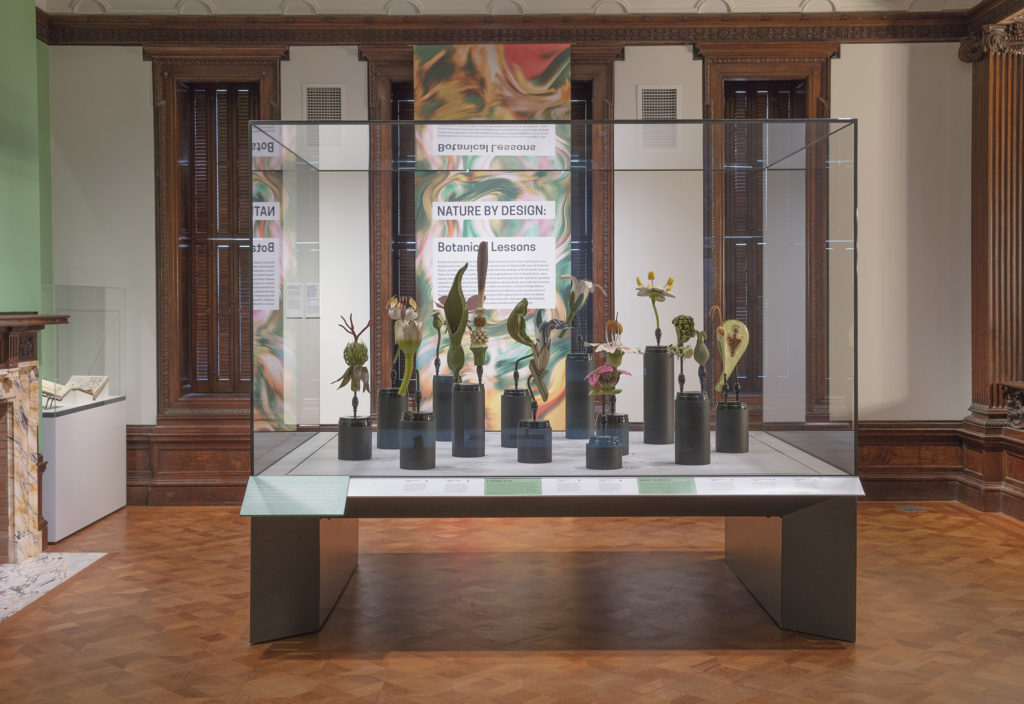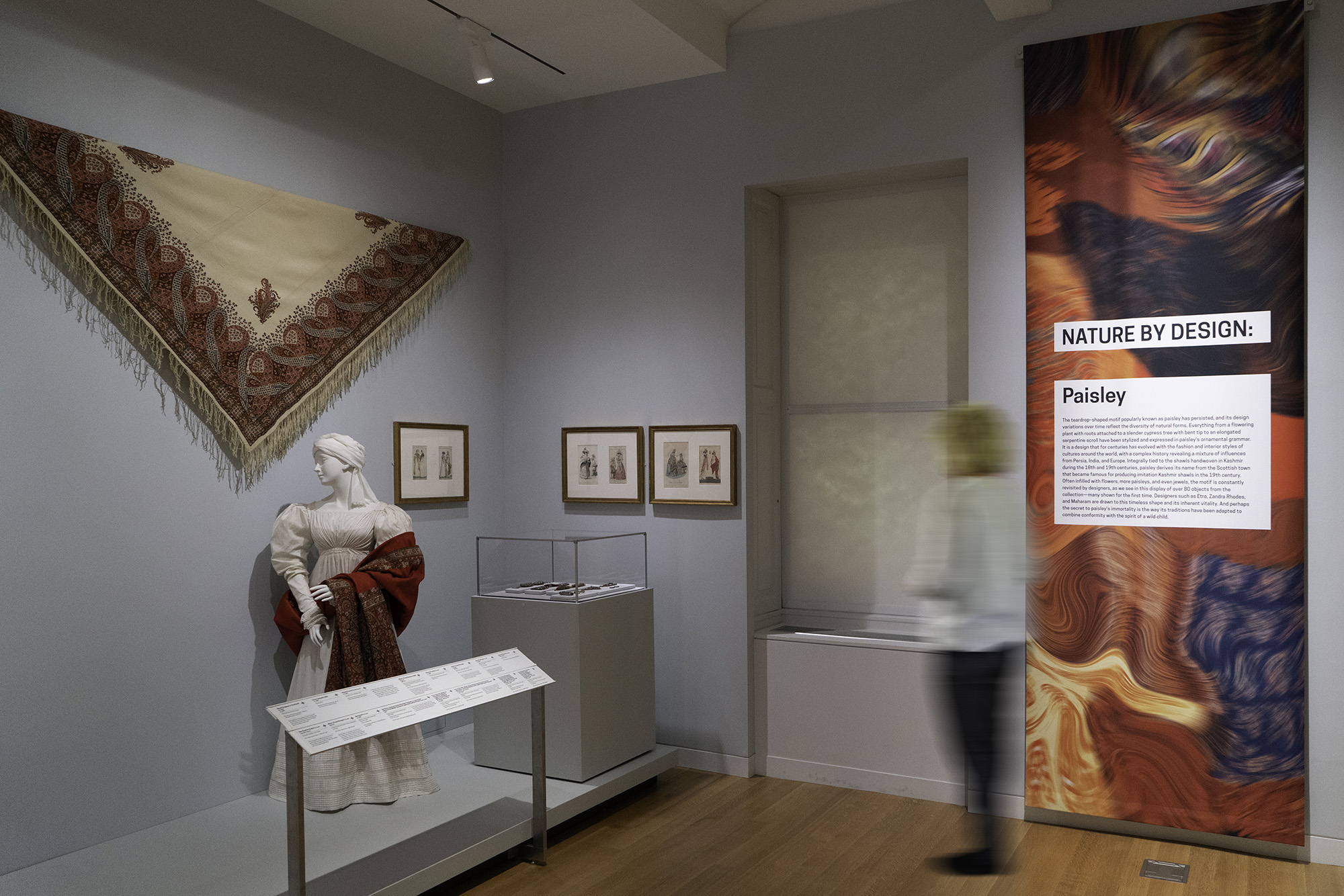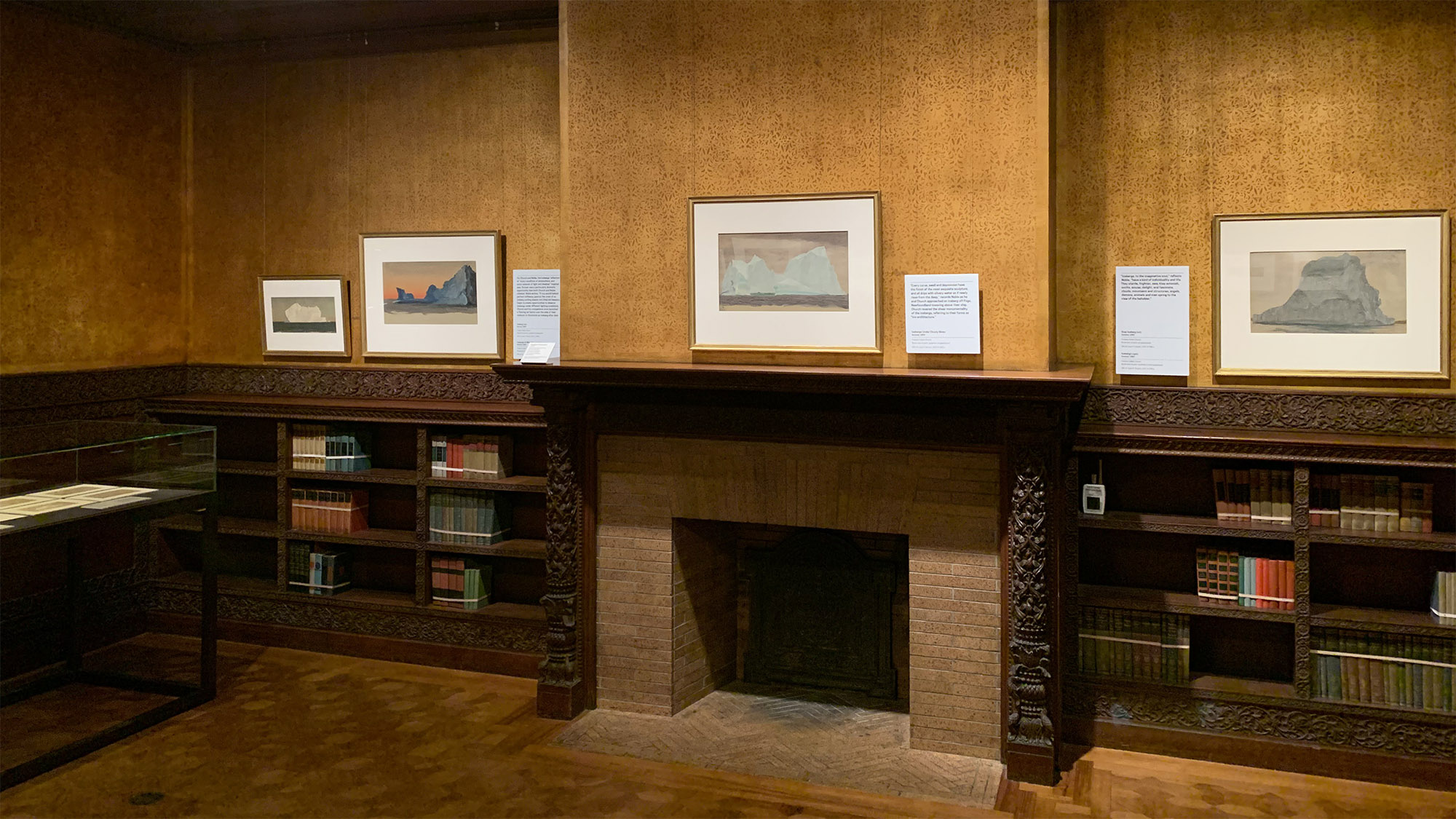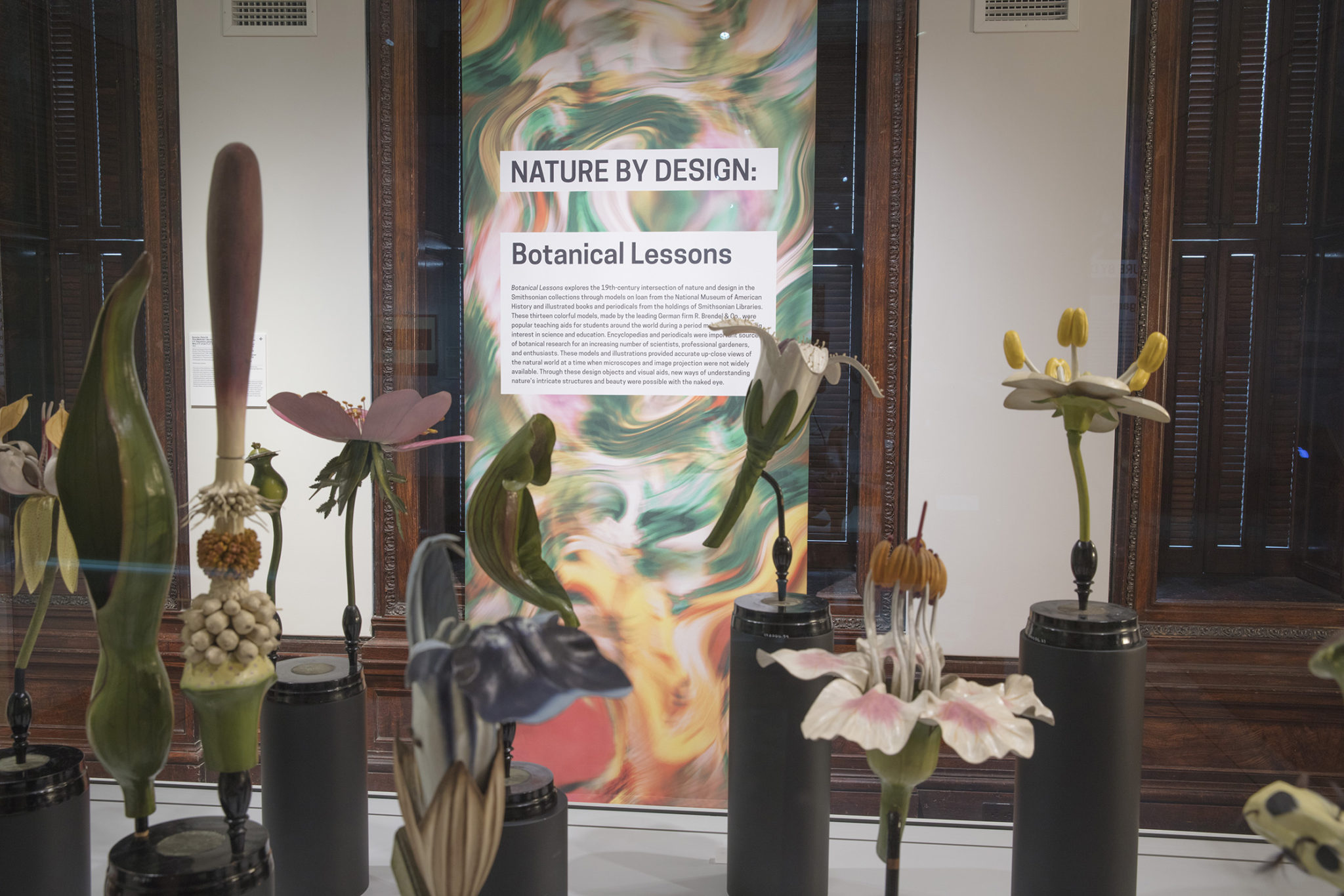This exhibition explores the 19th-century intersection of nature and design in the through models and illustrated books. Highlighting the exhibition are thirteen colorful models made by the R. Brendel Company and on loan from the National Museum of American History.

Dating from the late 19th and early 20th century, each model features a custom aluminum lift to create an organic, naturalistic effect within the display case.
PAISLEY

The teardrop-shaped motif popularly known as paisley has persisted for centuries, and its design variations over time reflect the diversity of natural forms. This exhibition highlighted seldom-seen objects from the museum’s collection, including numerous oversized shawls from the 18th and 19th centuries, juxtaposed with new fashion acquisitions making use of the timeless motif.
After Icebergs
In the summer of 1859, Frederic Edwin Church (1826–1900)—the most celebrated American landscape painter of his time—journeyed to Newfoundland and Labrador to study and sketch icebergs in preparation for a monumental oil painting. This exhibition collects standout examples of Church’s studies, displaying them in the Carnegie Mansion’s iconic Teak Room.

Chruch was accompanied on the voyage by his friend Louis Legrand Noble, whose book chronicling the adventure, After Icebergs with a Painter: A Summer Voyage to Labrador and Around Newfoundland, inspired this show’s title. In a time of climate change and sea level rise, the exhibition reminds us that icebergs are portions of melting glaciers, and offers a moment to reflect on the fragility of the natural world.


